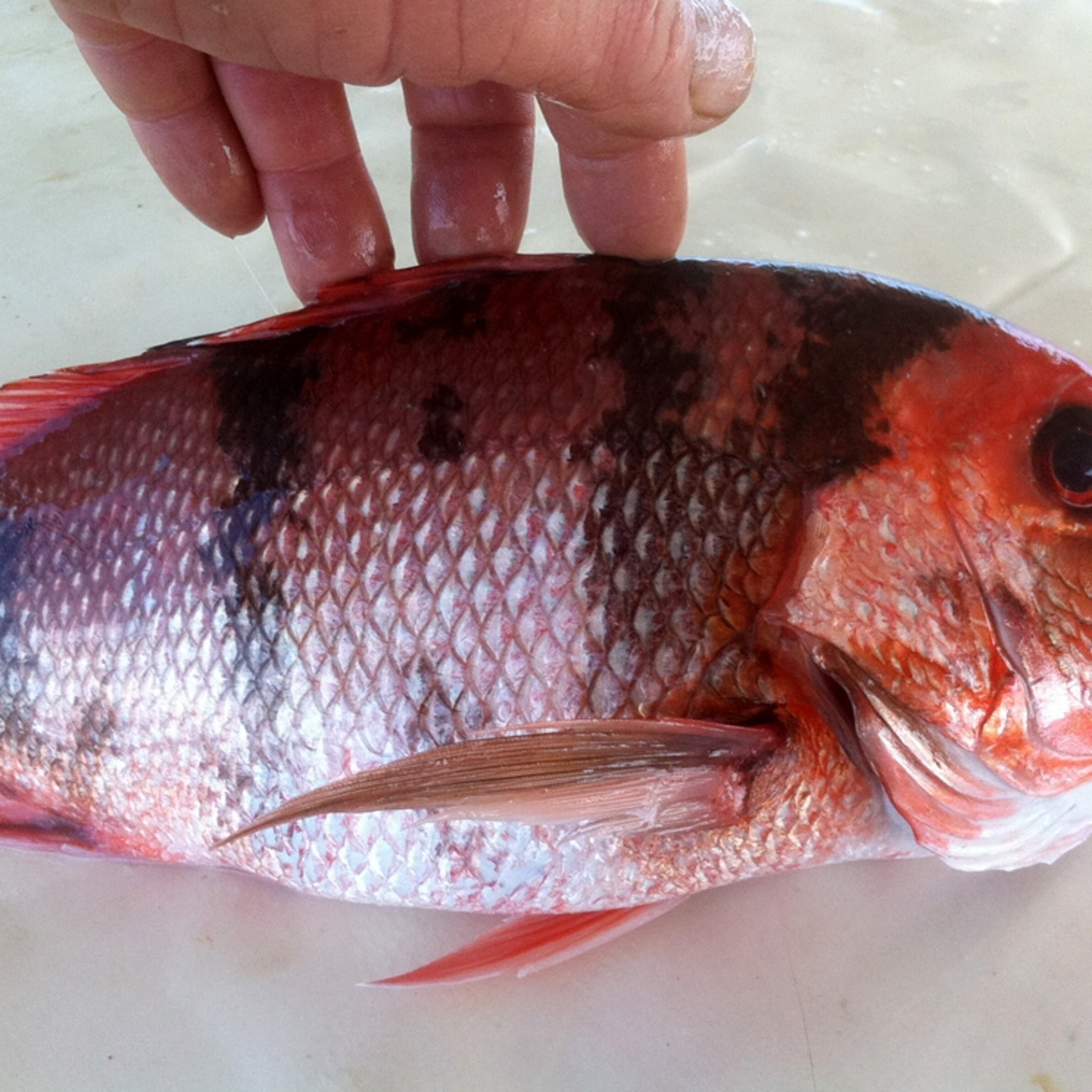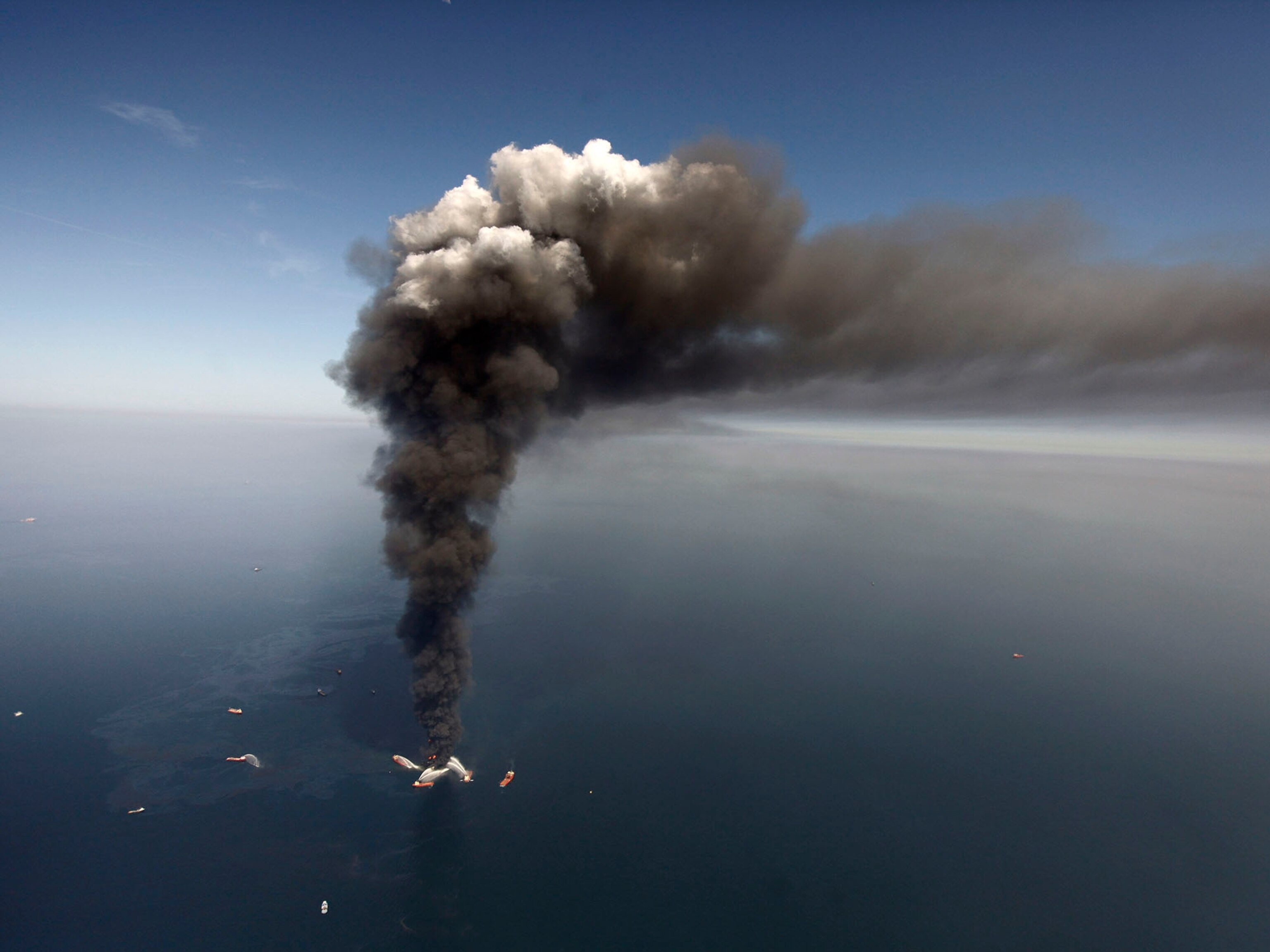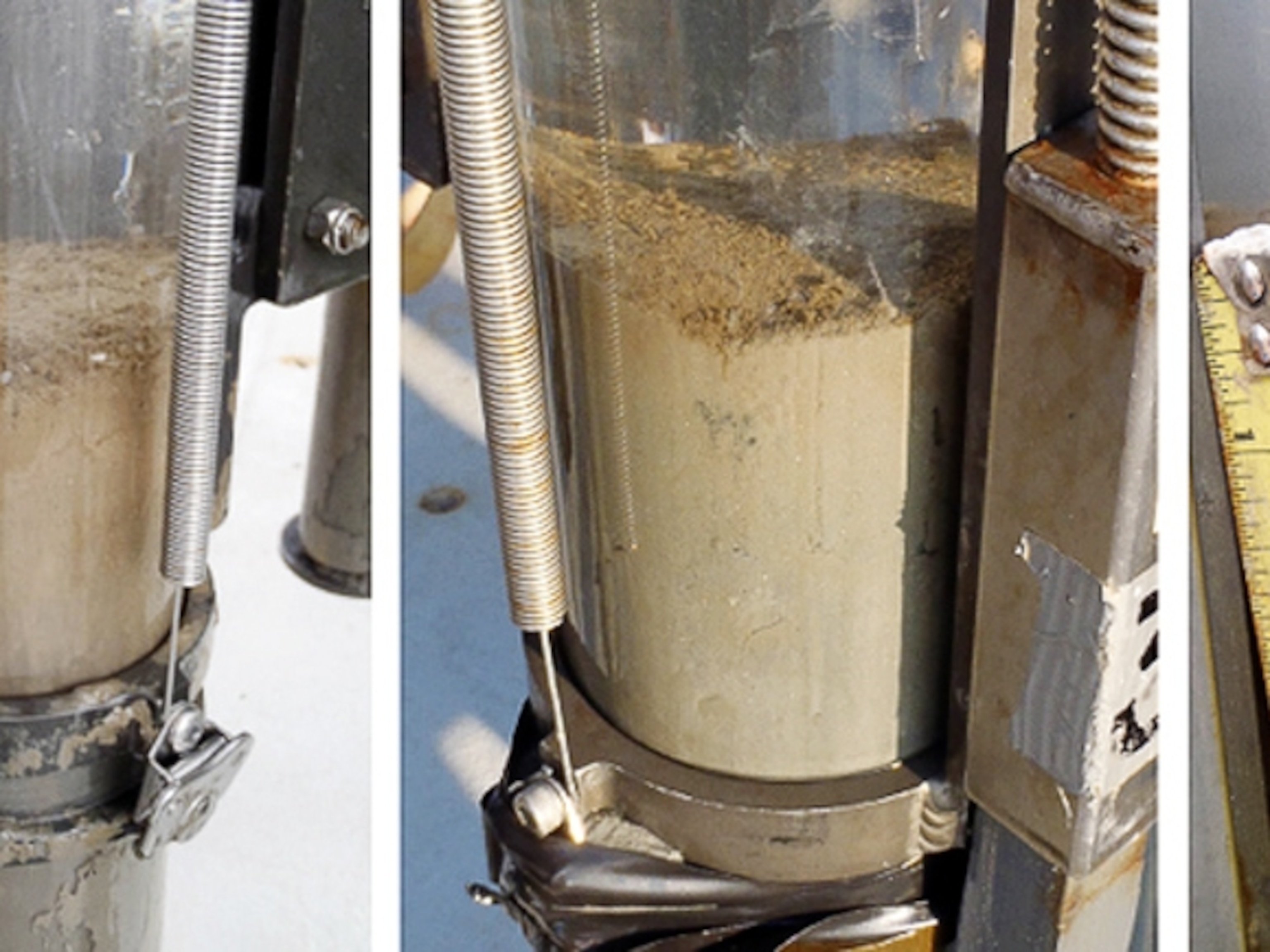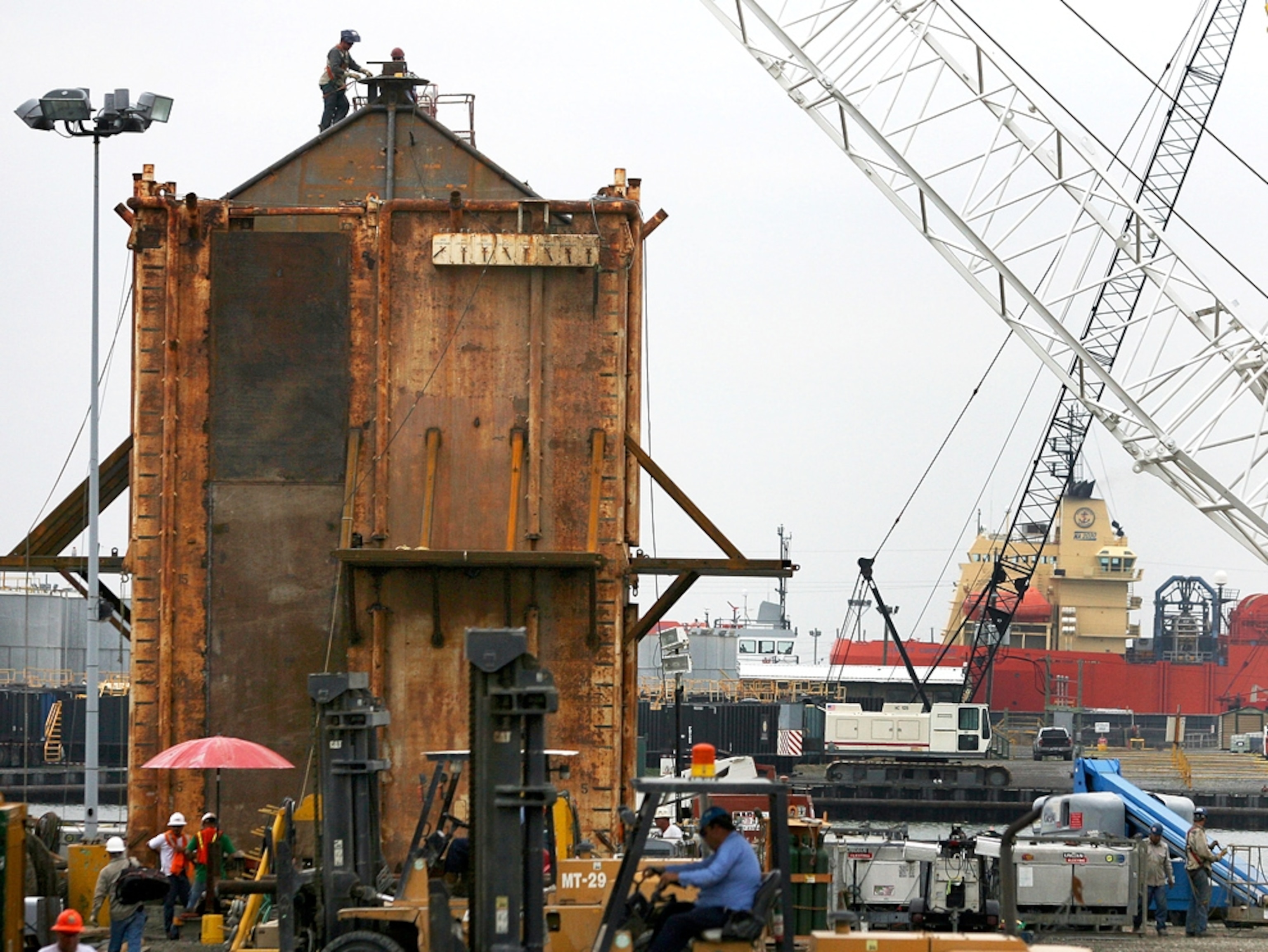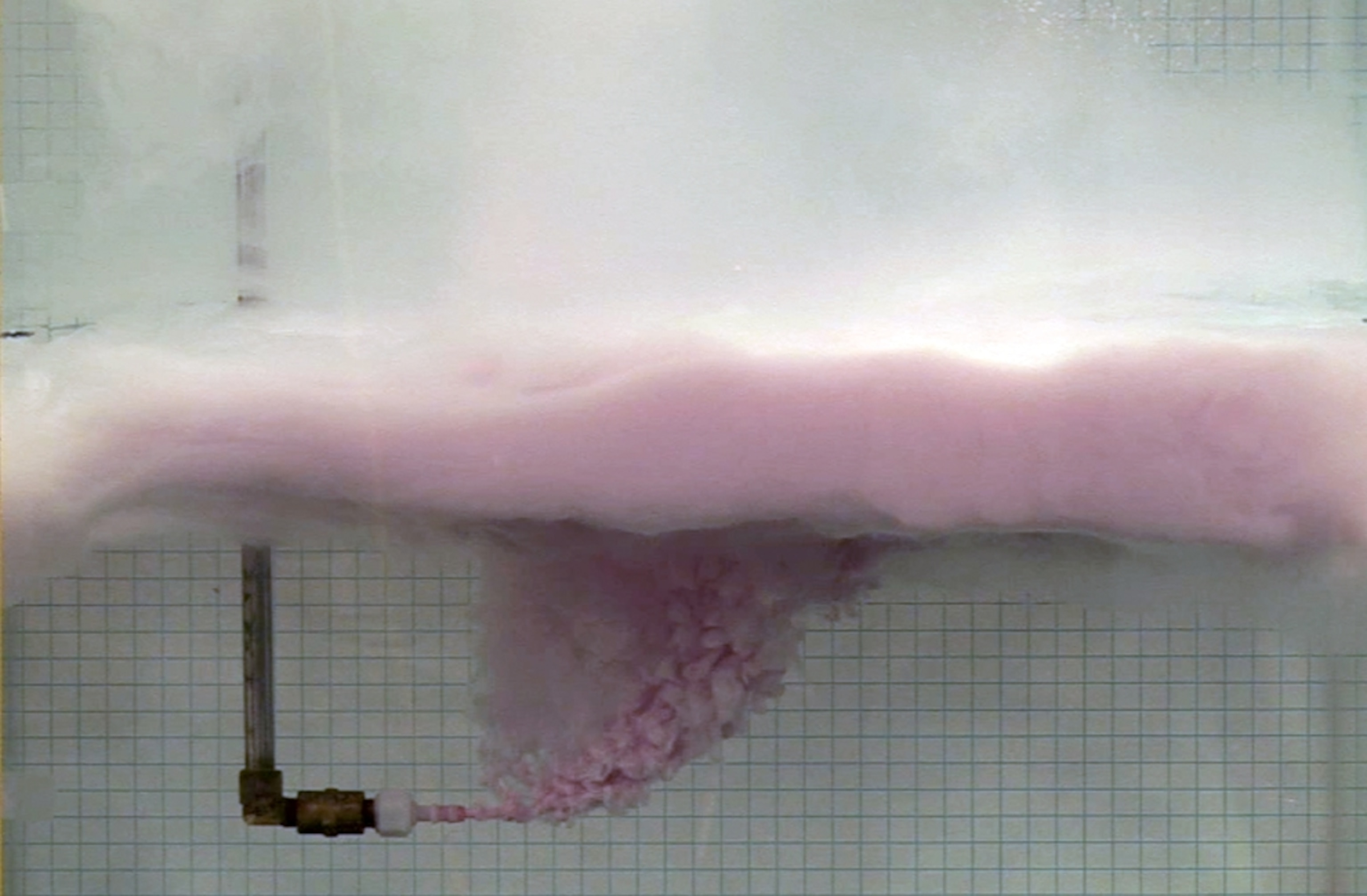
Why Did Huge Oil Plumes Form After the Gulf Spill?
Dispersants broke oil into micro-droplets suspended by equally dense water.
Scientists may have partially cracked a lingering mystery of the Gulf oil spill: why huge plumes of oil spread for miles underwater instead of rising to the surface as slicks.
These plumes were caused in part by unprecedented amounts of chemical dispersants injected near the leaking Deepwater Horizon wellhead in an effort to better disperse the oil from forming big globs—much like grease-cutting soaps do for dirty dishes.
At the time when the plumes were first discovered, attention had focused largely on tracking them and predicting their impact on marine life.
But a bigger question is why the plumes formed at all. After all, anyone who's ever seen the sheen of oil on a puddle or shaken a bottle of salad dressing knows that oil floats.
"Oil and water don't naturally mix," said Richard McLaughlin, an applied mathematician at the University of North Carolina, Chapel Hill.
What happened is that the dispersants broke the oil into micro-droplets that merged with the deep-sea water, then rose slowly, said McLaughlin, who was researching ocean-mixing problems like these well before the Gulf oil spill.
But the water at the seabed isn't the same as at the surface. Not only is it colder, it's saltier and therefore denser.
The result is that the micro-droplets didn't float all the way up. Rather, they rose to the level at which they were the same density as the surrounding water—and stayed there, according to lab experiments by McLaughlin and colleagues Roberto Camassa and Brian White.
(See "Gulf Spill Dispersants Surprisingly Long-lasting.")
Recreating Plumes in the Lab
McLaughin heads a team studying how oil interacts with layered fluids in 40- to 50-gallon (150- to 190-liter) aquarium tanks.
(Read about the robots studying the Gulf oil spill.)
That might sound like a small experiment to study a plume the size of Manhattan, but it works, McLaughin said.
"In a lab, you have complete control. In the field, you can only measure [the plume] by dropping a probe through it. In these experiments we can see 360 degrees around the plume."
To create plumes, his team slowly fills the tanks with water, starting with saltier, heavier water. Then they add less salty water, being careful to keep the layers from mixing.
Finally, they inject different types of oil from the bottom.
If they use pure oil, he said, the oil simply bubbles to the top, going through the water layers as though they're not there.
But if the oil's mixed with dish-washing soap—designed to mimic the dispersants used in the actual spill—the effect is quite different.
"The oil forms a big cloud underwater," he said, "completely detached [from] the surface. . . . It's quite dramatic."
Scientifically, "the interesting thing is trying to understand where this cloud forms, under what conditions it forms, and how long it stays."
So far, the research is preliminary. "But loosely," he said, "the things which really matter are the form of the stratification, the amount of dispersant, how well you mix it, [and] the flow rate."
For example, he said, you'll get different thicknesses of plumes if the density of the water in the tank varies gradually than if it's divided into sharply distinct layers.
And changing the way in which the oil and detergent are mixed affects how long it takes for the micro-droplets to merge and begin rising to the surface.
"We've seen things stay suspended for weeks," he said. "And [we've seen them] come out of the cloud in a couple of hours and leak to the top."
(See video: "Gulf Oil Plumes Still a Threat?")
Plume Research May Demystify Future Oil Spills
McLaughlin's research may also help scientists understand future oil spills. His ultimate goal is to develop mathematical models to determine the depths at which plumes would form in a future spill, what fraction of the oil would be trapped in them, and how long the plumes would remain.
Terry Hazen, head of the ecology department at Lawrence Berkeley National Laboratory, agrees that this knowledge is needed.
"Understanding these relationships will help us model where the oil will go, plus understand how well it will biodegrade," said Hazen, who is not part of McLaughlin's team.
Tiny droplets, he explained, are more easily biodegraded by oil-eating microbes naturally present in Gulf waters.
In the Gulf oil spill, these organisms acted so quickly that within weeks, the plumes could no longer be found.
"We went out as far as 300 kilometers [186 miles] from the wellhead and couldn't detect them," Hazen said.
Gulf's Complexities Hard to Mimic in Lab
Yet McLaughlin noted that his team's research has limitations.
Oil that fed last year's Gulf plumes, for example, came from deep below the seabed, where the earth is hot. Then the oil jetted into cold water under very high pressures that exist far beneath the Gulf's surface.
"Those are complexities we can't handle in our lab," McLaughlin said.
What his lab can handle, however, are bigger tanks. He plans to subject plumes to the types of underwater currents found in the oceans that may play a role in how the oil plume spreads.
"That's the next phase," he said.

